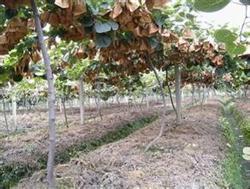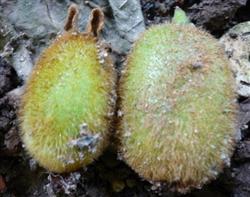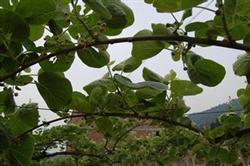Kiwifruit winter shears to achieve "three accuracy"

The agricultural proverb said, "although a pair of scissors is small, it can determine the yield of hairy peaches." This shows the importance of winter shears. How to be accurate and effective in kiwifruit pruning has become a concern of fruit farmers. Kiwifruit winter shears should be "three accurate". To be accurate in time, the pruning time of kiwifruit in winter should start 10-15 days after the fallen leaves of fruit trees, from about the middle of December to the end of the Beginning of Spring next year. The best time for winter cutting is about 20 days before and after the Winter Solstice, which should not be too early or too late, preferably in sunny weather. If it is cut too early, the return of nutrients from the branches to the roots is not finished, it will cause a lot of waste of stored nutrients; if it is cut too late, there will be a large amount of bleeding when the branches sprout in the coming year, which will affect the branching and sprouting of the trees. The object of pruning should be accurate according to the variety, tree age, tree strength, geological conditions, management level and have different pertinence, not blindly. It is mainly reasonable and moderate pruning the fruit mother branches of kiwifruit, comprehensively removing dead branches, thin and weak branches, disease and insect branches, overlapping branches, bifurcated branches, root germinating branches with no use value, growing branches and developing branches with no prospect of culture. after pruning, timely apply wound anti-decay film to protect wound healing, tissue growth and prevent bacterial infection. The pruning position should be accurate and the winter pruning should be changed from more branches to less branches; the combination of long, medium and short branches should be changed into one-time long branches; the short section should be changed into long branches, and more buds and fewer branches should be pruned. For the retention of fruiting mother branches, the row spacing was 3 × 4 m, with 16 × 18 long branches per plant, and 2 × 3 m with 6 × 8 branches per plant. Generally speaking, the branch retention of Actinidia chinensis is larger than that of delicious kiwifruit. Leave mediocre branches to fill the void when there is space, and leave full buds when cutting. When there is room for growing branches, there are 3-4 buds cut short, and the new branches can be cultivated to grow vine backbone branches. According to the growth strength of the branch, the pruning length of the fruiting mother branch is determined. Generally, the strong branch retains more buds (about 8-12 buds) and the weak branch retains fewer buds. The perennial branches should be renewed and pruned, and local or whole plant renewal should be taken according to their senescent position. Redundant branches, such as dead branches, disease and insect branches, overdense branches, cross branches and rhizosphere sprouting branches, are all cut off from the base. Single-stem and double-arm tree-shaped (zigzag) pruning leaves a long fruiting mother branch every 25 cm on the main vine, requiring more than 8 buds to stay outside the outermost lead wire, protruding 2-3 buds to form a "bow" shape and expand the fruiting area. There is a bald space in the crown, which can leave 2-4 buds and bear fruit branches to form a flat result. The distance of fruiting mother branches on the main vine of Hayward and Xuxiang varieties is generally 20-25 cm. After pruning, tie the vine according to the above spacing in time, and the light transmittance needs to reach about 30%. The remaining amount of branches per mu should be determined according to the planting density. Only long branches have space to retain, no space to be thinned from the base, leaving no stumps.
- Prev

Three measures of kiwifruit summer management
What is the reason why kiwifruit begins to fall? According to the investigation of fruit drop, there is a hard spot in every fruit drop, which forms a sponge under the hard spot and rotts seriously. It is considered that the main cause of fruit drop is the harm of bugs, followed by the spotted wax cicada. In view of this, the following introduces the prevention and control methods of bugs. What happens on kiwifruit is called pear.
- Next

Kiwifruit is busy clearing the garden in spring.
First, early prevention of diseases and insect pests: before germination and germination, 100 to 150 times more barium sulfide is used for tree pest control or stone-sulfur mixture of 3 to 5 degrees to kill eggs and overwintering bacteria. After leaf spreading, foliar fertilizer Nongkang 120 was sprayed to supplement fertilizer and prevent disease. Second, early application of budding fertilizer: the result is that each tree is compound.
Related
- Moge, come on! The staff of the peasant association in the producing area of cantaloupe were frightened when the crowd gathered.
- Causes and Solutions of low Fruit setting rate of Apple
- Symptoms and control measures of passion fruit virus disease
- Fruit growing lesson: how do apple orchards keep high yields?
- Can you build orchards in the mountains? What are the pros and cons?
- How to manage the coloring period of Crisson grape?
- This paper introduces the processing technology of two kinds of fig products.
- How much is a month for retired teachers in rural areas by 2020?
- How can strawberry planting increase sugar content? We should pay attention to management in many aspects.
- What are the cultivation techniques on how to improve the yield of golden fruit?

